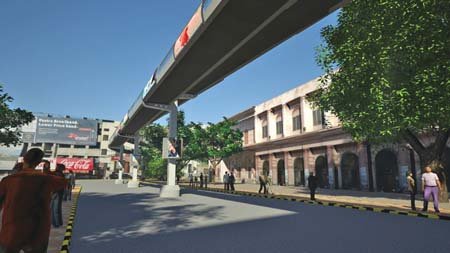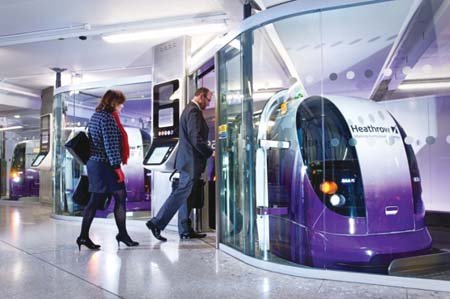Urban India will account for 70% of the economy by 2040 with explosive growth in India?s cities which already suffer from an urban transport crisis. Billions of man-hours are lost with people ?stuck in traffic?. Congestion cost comes from increased travel delays, environment impact, vehicle maintenance costs and increased vehicle collisions. The opportunity lies in leveraging innovative and efficient technologies to tackle urban traffic congestion.
The story is the same across Asia. Jakarta is facing gridlock. Average speeds in cities such as Manila and Hanoi are very low. Congestion, pollution and fatalities and injuries are high.
Ultra Fairwood is working on over 30 PRT systems in different cities in India, and another 30 projects in other Asian and European cities.
What is PRT?
A PRT system comprises three elements:
? The Pods (vehicles) are small fully automated, battery powered electric vehicles. They seat up to six people and travel at up to 40km/hr. Each Pod can make up to 200 trips per day.
? Because the vehicles are small and lightweight, the infrastructure is cost-effective: a relatively light elevated steel-frame track is supported on slender steel columns. The vehicle has a turning circle of only 5m and so the infrastructure can navigate dense city areas and tight bends.
? The control system comprises intelligent vehicles linked to a central control room, which ensures vehicles are available to match demand. Experienced operators are in touch with every pod and all parts of the track. Pod scheduling is automatic and driven by customer demand.
PRT offers personal, sustainable, efficient, and cost effective public transport using autonomous electric vehicles available at stations on-demand ? meaning there is no waiting. PRT provides journeys that are non-stop, personal, comfortable, safe and secure. Pods only travel when they have passengers, and non-stop travel saves energy waste.
In order to avoid congestion on the ground, most PRT systems run on elevated guideways. Whilst the concept of a driverless, autonomous electric vehicle remains unchanged, the designs include those running on tubeless tyres on a flat surface (Ultra), rails and suspended. Motive power is derived either from on-board batteries, linear induction motors or from a third rail.
The technology is especially suitable for retrofitting into Asian urban environments where it can reduce congestion and offer safe, virtually noiseless, pollution free transport. Operating with low headways, the system is high capacity and provides driverless, no-conflict travel that is exceptionally safe.
With lower capital costs than many other public mass transport options (in the region of US$10-12mn per km including guideway, vehicles and control system), PRT systems can be commercially viable at acceptable fares and BOOT (Build Own Operate Transfer) models can make this available to governments and transport authorities using private sector capital. Viability Gap Funding from government can allow systems to operate at even lower fare levels where required.
The financial dynamics are driven by revenues (number of passengers and fares charged, supplemented by advertising revenues if appropriate) and operating costs (principal components include electricity, and manpower for the control room, maintenance and station staffing). Capital costs include the physical infrastructure, pods and control infrastructure including the software and technology. Experience to date suggests that acceptable IRRs can be earned in many situations with fares competitive to other modes of transport
The Heathrow Pod
The world?s first commercial system has been operating at London Heathrow for over two years. In this time it has become an established member of the Heathrow transport offering, replacing buses.
The Heathrow Pod has carried over 750,000 passengers, replacing over 75,000 bus journeys and has completed over 1.6 million passenger-km of travel. Waiting times for passengers average less than 10 seconds, and the journey is 60% faster than the former bus service. The PRT system is the single highest scoring feature in passenger satisfaction at Heathrow Airport. It has achieved over 99% availability and is exceptionally reliable.
PRT has the potential of providing transport solutions for Asian cities that will radically reduce some of the chronic congestion, pollution, accidents and noise. The system is lightweight and capital costs lower than other mass transit options.
Alan Moore, Deputy CEO of UltraFairwood, a Singapore based company providing PRT solutions throughout Asia.
Sanjaya Varma, Senior Transport Advisor, for Ultra Fairwood based in India.
 TrafficInfraTech Magazine Linking People Places & Progress
TrafficInfraTech Magazine Linking People Places & Progress




